After a week of sunshine and sea life at Moalboal, we headed for a couple of days in Cebu City. Cebu entered world history on March 17, 1521, when Ferdinand Magellan landed there during his circumnavigation of the globe. Magellan didn’t live to complete his journey because, although he befriended the first tribe he met and converted them to Christianity, another local tribe attacked and killed him the following month. This, and more of the city’s history, is commemorated in Cebu’s Monument.
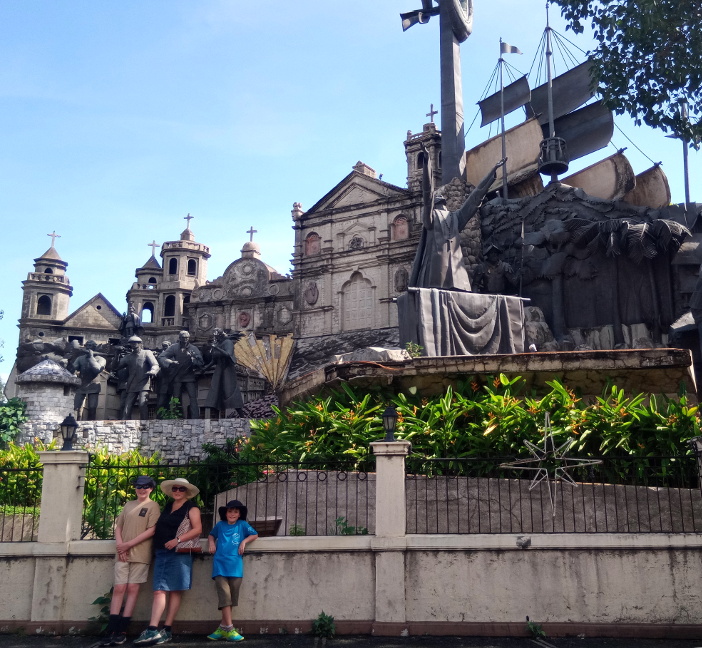
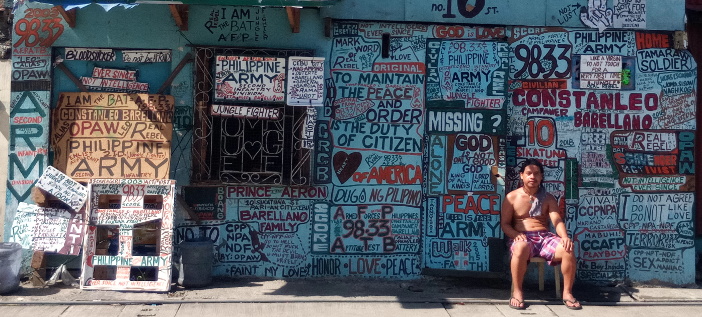
Opposite the Monument, Constanleo Barellano has a message for the world
Before his death Magellan gave a statue of the Christ Child, the Santo Niño, to the queen of the converted tribe. When the Spanish returned to Cebu to stay in 1565, the conquistadors burned down the village, as was the way, and found the statue preserved in a chest amid the ashes. The Santo Niño is now the Philippines’ most revered relic, on display at the historic Basilica. When we visited shortly after Christmas the queue for the chapel was so long that we decided to forego seeing the statue itself, but the Basilica is well worth looking around, as is the nearby Cathedral.

The Basilica del Santo Nino is a calming place to stroll around amid the madness of the city
We also checked out the nearby Diocesan Museum. Some of the exhibits are only of interest to devout Catholics, such as robes belonging to a former Archbishop, but there are also some fascinating examples of religious art. (Though the kids were less fascinated than we were, it must be said.)
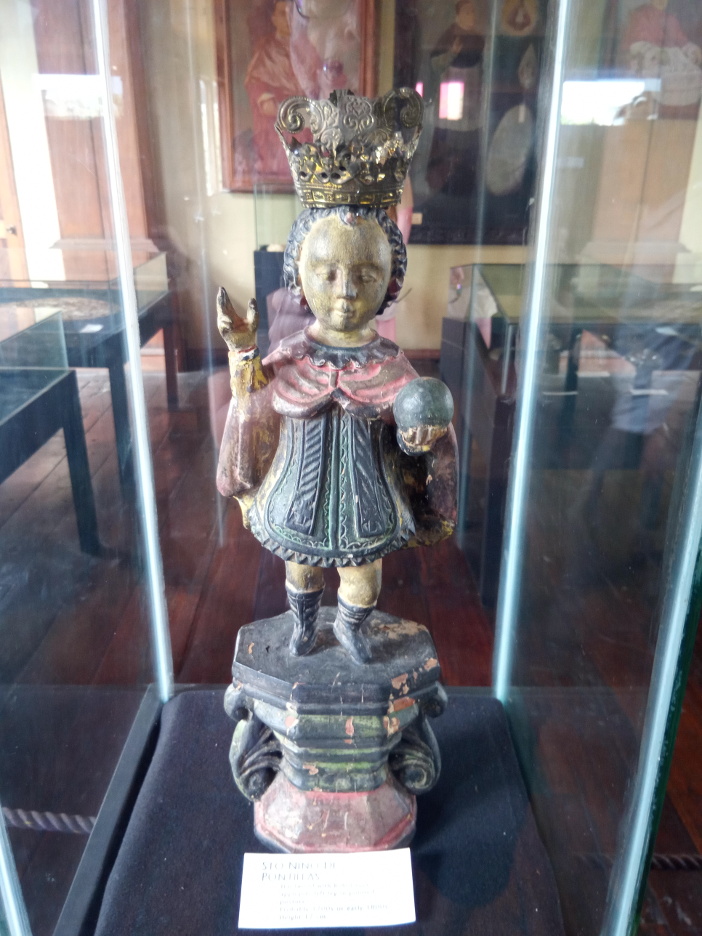
This Santo Niño is less elaborate than Magellan’s, but is similarly dressed like a 16th century Spanish prince
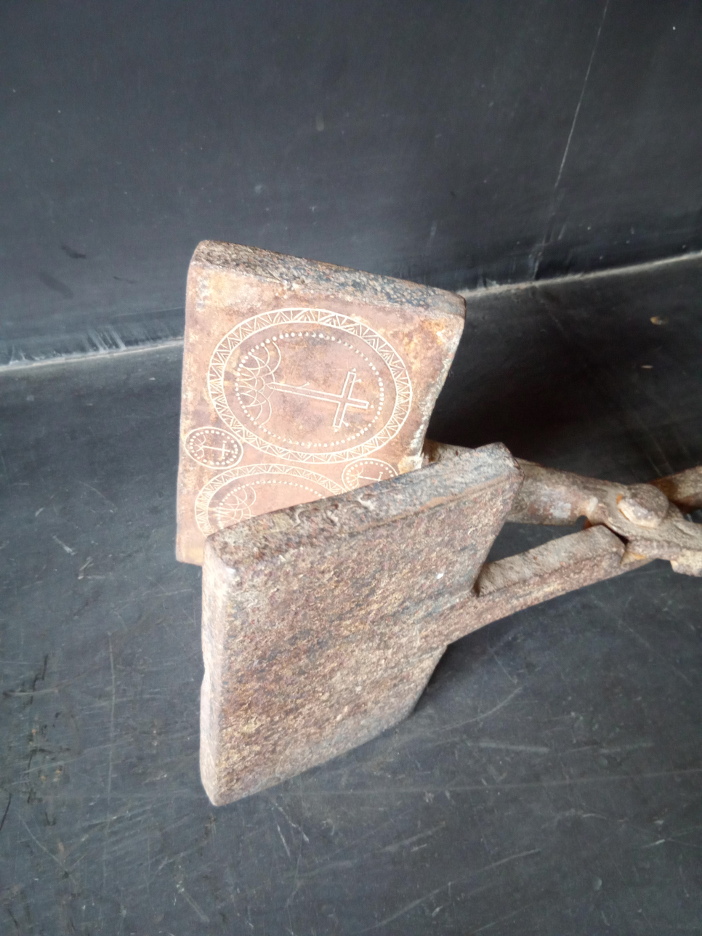
A stone press for making communion wafers
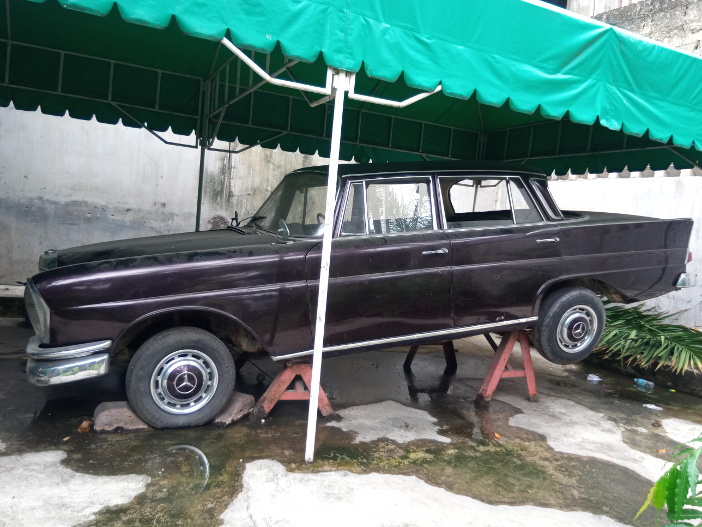
The car used by Pope John Paul II on his visit to the Philippines
Our preferred way of exploring a city is on foot, where we have time to take in the sights, sounds, and smells. However walking around Cebu City was challenging. With the broken or non-existent sidewalks, heavy traffic, and numerous beggars, it was easy to see why most people use bikes or the brightly-colored jeepneys. We’ve lived in China for nearly four years now, and traveled extensively around Asia, so I don’t think we can be accused of having lived a sheltered existence, but nonetheless I have to admit that we found the poverty in Cebu City distressing. Even so there was much to discover.

The graffiti art was… strange
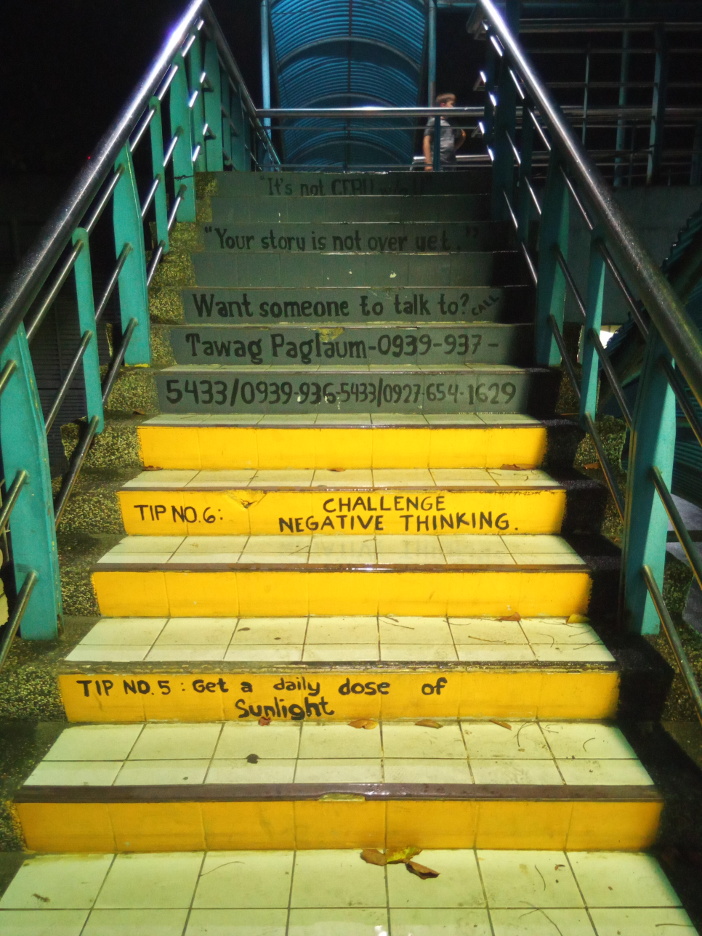
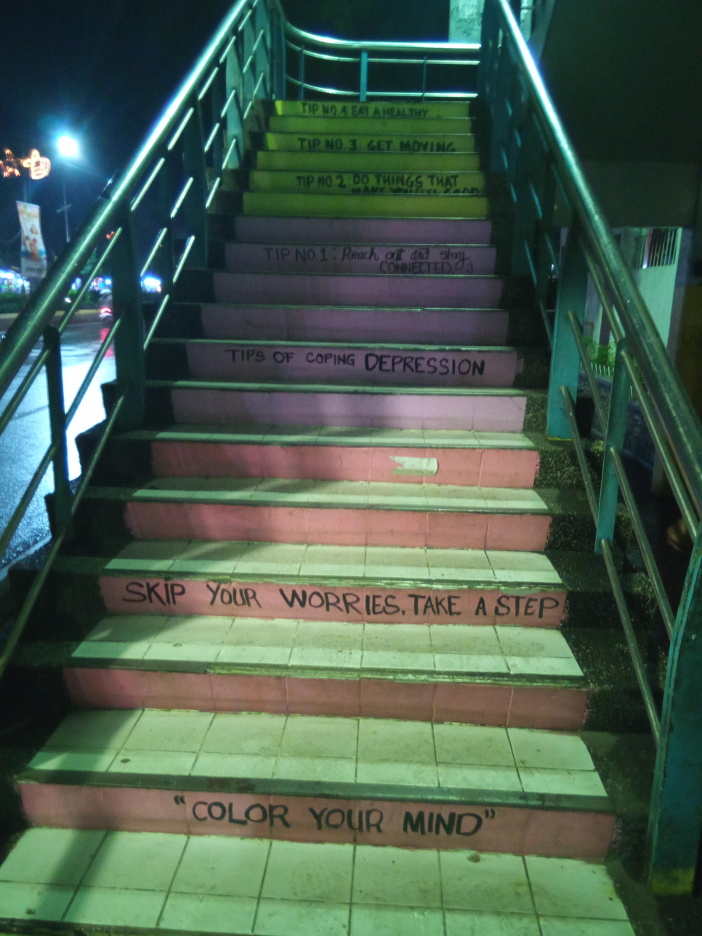
Uplifting messages on a staircase leading up to a bridge
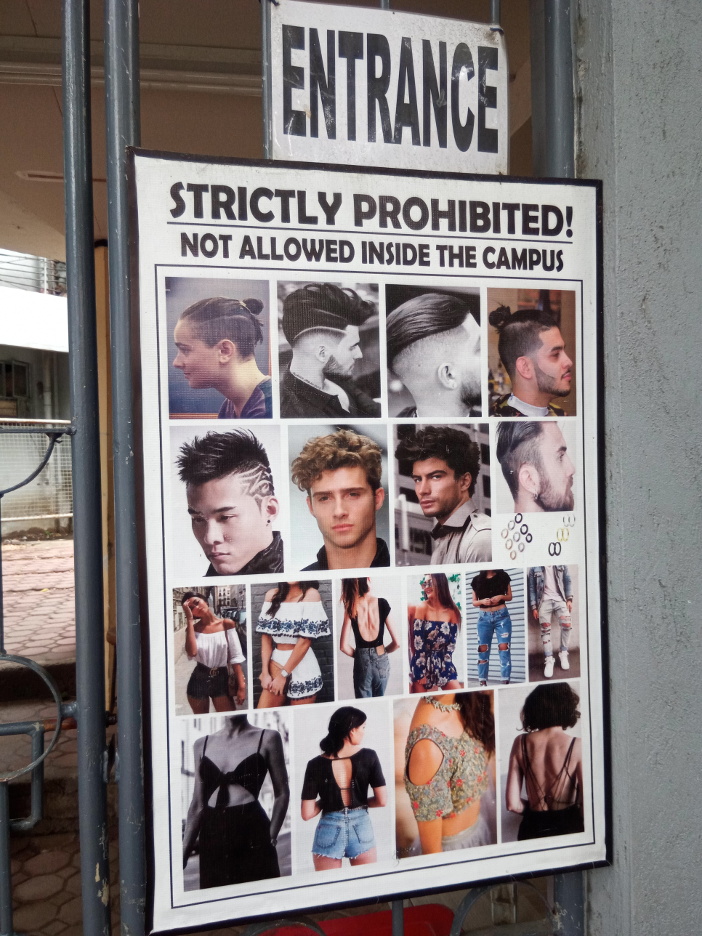
The dress code for students is strict

Roadside shrines are common, like this one with San Roque showing the plague sores on his leg
For our second day in Cebu City though, we needed to get out, and headed for the hills.
Photos: Andrew Killeen




